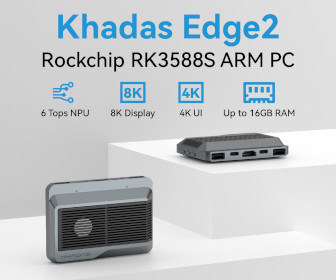Papyr is a Nordic nRF52840 based Bluetooth/802.15.4 ePaper Display
Electronut Labs has designed a Nordic Semi nRF52840 boards featuring a black, red, and white e-Paper display. Papyr board supports both Bluetooth LE (BLE5, BLE Mesh) and 802.15.4 (Thread, Zigbee) connectivity, and can be controlled via an Android app, with iOS support coming later on. Papyr hardware specifications: Wireless Module – Raytac MDBT50 module with Nordic nRF52840 BLE/802.15.4 SoC (as used in Raytac MDBT50Q-RX Bluetooth 5 LE USB adapter) Connectivity – Bluetooth 5 LE/Mesh, 802.15.4 (Thread/Zigbee), NFC (PCB antenna) Display – 1.54″ 200×200 pixel red/black/white epaper display USB – 1x micro USB device port Expansion – Extra GPIOs via 2.54mm header Debugging – SWD Programming header Misc – RGB LED, push button, USB/Battery power switch Power Supply – 5V via USB, or CR2477 coin cell Dimensions – 65 x 35 mm You can control the board using Electronut Labs app for Android. Three features are supported at this stage: Draw, […]




